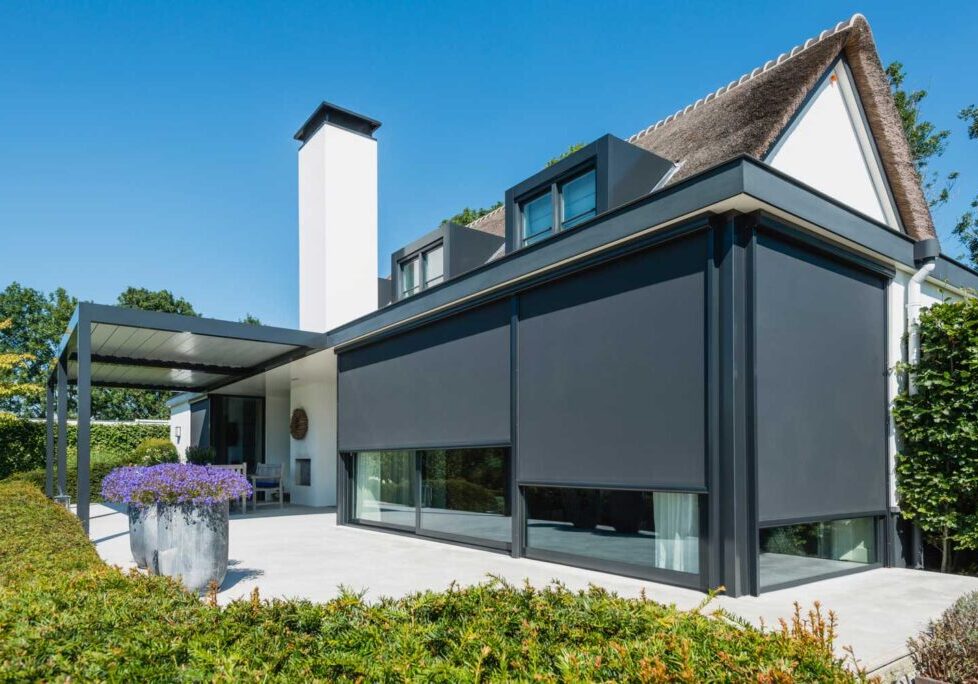How Can I Stop Overheating In My New Build Home?

New homes now have to be built to a standard where overheating for residents shouldn’t ever be a problem.
Building Regulations Part O means architects and house builders have to mitigate solar gain coming through glass windows and doors, especially those facing south and west.
The regulations were introduced in June 2022 partly because of the trend to build homes with large windows and glass doors at the same time as our climate began to noticeably warm up with more intense and frequent heatwaves.
In addition, new homes are built with energy efficiency in mind meaning that modern buildings retain heat better compared to drafty older properties.
Mix all these factors together and you create the ideal conditions for overheating in homes, with residents suffering the dire effects of suffocating heat - disrupting their mental and physical health, not to mention their sleep.
Passive shading
Many architects now design houses with integral passive shading such as external blinds, awnings and shutters.
Check with the developer or architect to ensure that passive shading is incorporated into the design of any new build that you are looking to buy.
External blinds fitted on large windows, doors and roofs can blend seamlessly into the façade and can add to the overall attractiveness of a new home.
They are easy to control via a smartphone and a home automation system or via sensors that can lower the blinds when a room reaches a certain temperature.
Architects can hide the fixtures and hardware for external blinds and awnings inside a box built into the wall or ceiling or install the blinds directly into the window recess.
Shutters, louvres & awnings
Shutters and louvres are made up of slats at an angle which can be moved to stop the solar glare but allow for ventilation.
Awnings and pergolas are more familiar in Mediterranean countries, preventing the sun’s heat getting through windows or doors.
Solar glass (solar control glazing)
'Solar glass' uses a spectrally selective coating to let in daylight while cutting solar heat gain. It’s a useful baseline measure for south and west façades and rooflights because a low g-value (often ~0.25–0.40) reduces summer overheating without darkening rooms too much (typical light transmittance ~0.60–0.70).
Do note the trade-offs: stronger coatings can slightly tint/reflect the view and won’t block as much heat as external blinds, which stop the sun before it hits the glass.
Triple glazing
Some new builds are built with triple glazing which is excellent for stopping heat escaping. But its incredible insulation properties also mean heat can build up inside the building, making it uncomfortably warm.
However, triple glazing’s G-value – the measure of how much sun passes through the glass - is much higher than external blinds.
Triple glazing only reduces solar gain by up to 50 per cent, compared to a 90 per cent reduction by external blinds.
For north and east facing windows, triple glazing alone will likely be enough to block solar gain – but for south and west-facing windows passive shading should be considered as well.
Passive shading is the future
New regulations are coming into effect from 2026 as part of the Future Home Standard (FHS) which requires new homes to be built with less than 75 per cent of carbon emissions.
The regulations will be implemented in stages and will reiterate the need for new builds to incorporate passive shading such as external blinds with mechanical systems such as AC units only used as a last resort.
AC is becoming a dirty word
Air conditioning is becoming toxic in people’s minds as we wake up to the reality of climate change.
It is responsible for seven per cent of global energy consumption and nearly four per cent of global greenhouse emissions via greenhouse gas refrigerants and electricity used to power the units.
This is only expected to get worse unless we stop relying on mechanical cooling methods because as the climate heats up, the more people will rely on AC, creating a vicious circle.
Passive shading like external blinds does a brilliant job of stopping the cause of overheating in the first place, making the use of AC units minimal or unnecessary in more temperate climates.
External blinds to suit everyone
In practice, the best results—and the simplest path to Part O—come from combining solar-control glass or triple glazing with passive shading (external blinds, shutters, brise-soleil). But if you can only invest in one option, passive shading solutions offer better results overall.
Our external blinds come in many different designs and colours tailored to your needs.
Kensington Blinds has over 40 years of working with architects and builders and our experts are more than happy to provide you with a quote.
If you’d like more information, please contact us.



